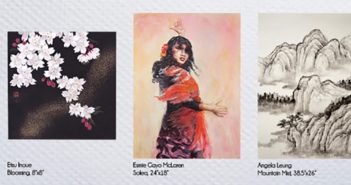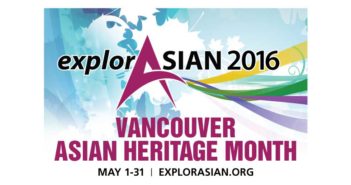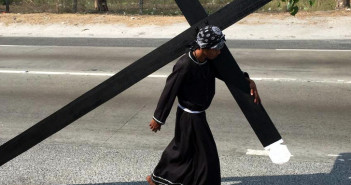Pinoy in Canada
By Yul Baritugo
The Okanagan Lake was simply stunning while Skaha Lake offered all sorts of activities from “see-doing” to water boarding, canoeing, water toy rentals and several other adrenaline-inducing sports activities. It was our second summer and we were “all fresh off the boat” as our Vietnamese Canadian friends would say. Driving from Vancouver, it was traditional to stop at a look out just before entering Penticton in what I thought was another bucolic one-street town.
After entering Penticton and passing by its small airport, we headed straight for Walmart when lo and behold — a Manila Jeepney — complete with its peculiar gaudy regalia came honking by from out of nowhere. I was completely floored. Some bloody Filipino chap must have imported it straight from Manila. A Manila Jeepney is traditionally an old World War II vintage military jeep transformed to become a transport workhorse. In the Philippines, it can usually accommodate up to 13 people including the driver. We asked around and it turned out the enterprising Filipino owner was using the Jeepney to transport revellers to a small beer house he owns fronting Skaha beach.
Filipinos are indeed everywhere. According to a book “A Brief History of Asia in North America (published by Vancouver Asian Heritage Month, 2001), when the Spanish colonized the Philippines and began their lucrative trade between China, Hawaii, the Philippines and Mexico, (it was called the “Manila – Acapulco Trade”), both Chinese and Filipinos were sought out for their skills as sailors and navigators aboard Spanish galleons and other colonial ships. This was back in 1565.
By the mid 1700’s, Filipinos began to colonize the area now known as Louisiana (specifically, the bayou of Barataria Bay, thirty miles south of New Orleans). They were referred to as ‘The Manilamen’. The descendants of the Asian sailors of the Spanish galleons became the oldest living colony of Asians in North America.
In Canada, the first reported presence of Filipinos was in 1931. There are no other available extant records. Sometime in 1950, 10 Filipinos were supposed to have been in Manitoba. According to author Eleanor Laquian, a handful of doctors and nurses under the United States Exchange Visitors Program, came to Manitoba to have their visas renewed from outside the US as required. Both retired Vancouver couple Aprodicio and Eleanor Laquian wrote a book about 50 years of Filipino migration to Canada.
From 1946 to 1964, the decade when Filipinos were formally recognized as a distinct ethnic minority, there were only 770 Filipinos in all of Canada, the couple’s research showed.
But the numbers slowly changed in the later part of the 60s as more and more Filipino workers immigrated to Winnipeg to work in the budding garment industry there. They were mostly from Baguio City, in northern Philippines. A wave of other Filipino immigrants followed.
Statistics Canada projects that in 2017, when Canada celebrates its 150th anniversary, there would be at least 540,000 Filipinos settled in various provinces with Canada’s expected total population hitting 34.5 million.
The study, entitled Population Projections of Visible Minority Groups, Canada, Provinces and Regions, used as its basis the 2001 census figure of a total population of 30.6 million, of which at least 315,000 are Filipinos.
The same study projected that from the at least 65,000 Filipinos in B.C. in 2001,the Filipino population in the province will grow to more than 123,000 in 2017, with Vancouver’s share at more than 112,000.
The Greater Toronto Area (GTA) remains home to the largest Filipino community in Canada. It receives an average of 9,000 new immigrants every year. The Filipino community in the Toronto area numbered about 131, 680 in 2001 rising to 181, 330 or an increase of 35 percent in five years.
Fifteen Filipino newspapers service the GTA with several radio programs and TV shows anchored by Filipinos. Tagalog is the 7th most spoken language in the city of Toronto. There are smaller Filipino populations in other municipalities such as Mississauga, Scarborough, Markham, Newmarket, and Vaughan.
The integration of Filipinos into the Canadian milieu are sometimes so complete that second generation Filipino Canadians can often hide their cultural roots so effectively even in open media having lost the language and the accent.
Remember the Lexa Doig (Alexandra in real life), she was the artificial intelligence and avatar named Rommie in Gene Roddenberry’s Andromeda, a television sci-fi series. She’s the daughter of Gloria, a Filipina and David Doig of Irish-Scottish descent. She was born in Toronto.
Sisters Cassie and Alex Steele of Degrassi, the Next Generation are also second generation Filipino Canadians. Cassie is a Filipino/British-Canadian songwriter, singer and actress. She often acts the character Manny Santos in Degrassi. She had appeared in the MTV movie “Super Sweet 16: The Movie,” “Relic Hunter”, and even released a debut album “How Much for Happy”.
Zuraidah Alman, formerly a CityTV news anchor and general assignment reporter and now national news anchor for Ontario Global TV is also a Filipino Canadian.
In politics, aside from Vancouver MLA Mable Elmore, other Filipino Canadian politicians had slowly captured key leadership roles like Rey Pagtakhan of Manitoba who was the first Filipino-Canadian Member of Parliament, and first Cabinet Minister (2001-2004), Rey Aglugub, Manitoba’s former NDP MLA (1999), Conrad Santos, first Filipino Canadian elected to a public office in Manitoba legislature (1981), Mike Pagtakhan, Winnipeg City Councillor, Point Douglas Ward (2002), Flor Marcelino, first woman elected MLA in Manitoba, Art Viola, former Lord Mayor and Town Councillor of Niagara-on-the-Lake, Ontario.
The saga is still unfolding but essentially these are the Filipinos in Canada.





